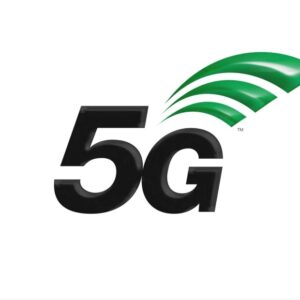FAQs

Intellectual Property Evaluation by Experts
Frequently Asked Questions
a. Standards are valuable to network providers because they allow for a multi-vendor environment, reducing costs and improving network components by market competition. Standards also allow manufacturers to gain sales by becoming a vendor to a network provider since their products work well with the products of other manufacturers.
Standards at best only provide 80% to 85% of the interoperability that network providers seek. The remaining interoperability is achieved by operations forums that reduce the number of options provided by the standards and by network provider certifications of products.
a. At the International Telecommunications Union (ITU) in Geneva, the standards or recommendations, as they are called at the ITU, are approved by countries. Individual corporations participate in their own country approval process before bringing a contribution to Geneva.
b. At the American National Standards Institute (ANSI), Committee T1 (Telecommunications) the standards are approved by corporations. Individual corporations participate in their own approval process before bringing a contribution to one of the sub-committees, such as T1S1 (signalling), of Committee T1.
a. FRAND means Fair, Reasonable and Non-discriminatory, a requirement of the patent policy of a standards organization. In the absence of an industry patent pool to define FRAND rates and terms and avoid royalty-stacking for a technology, the courts provide their definition usually based at least in part on the Georgia-Pacific factors.
- a. A standards essential patent (SEP) is a patent whose claims are essential to one or more sections of a standard. There is a difference between a SEP that is essential to the core functioning of a technology defined by a standard and an SEP essential to an optional section of a standard. A non-standards patent is not essential to a standard. The owner of a non-standards patent is not subject to FRAND obligations and may charge whatever rate and determine whatever terms they are able to negotiate.
a. Yes, this is a requirement of the federal government.
A patent pool is a group of licensors who test their patents as essential to a standard and offer a license on FRAND rates and terms jointly to avoid royalty stacking.
- 1. International Telecommunications Union (ITU) Patent Policy.
-
-
- 1.1. The ITU Telecommunication Standardization Bureau (TSB), the ITU Radiocommunication Bureau (BR), and the offices of the CEOs of ISO and IEC are not in a position to give authoritative or comprehensive information about evidence, validity or scope of patents or similar rights. The available information should be disclosed. Therefore, any party participating in the work of ITU, ISO or IEC should, from the outset, draw the attention of the Director of ITU-TSB, the Director of ITU-BR, or the offices of the CEOs of ISO or IEC, respectively, to any known patent or any identified pending patent application, either their own or of other organizations. However, ITU, ISO, or IEC are unable to verify the validity of any such information.
-
- 2. If a Recommendation | Deliverable is developed, and such information as referred to in paragraph 1 has been disclosed, three different situations may arise:
-
-
-
- 2.1 The patent holder is willing to negotiate licenses free of charge with other parties on a non-discriminatory basis on reasonable terms and conditions. Such negotiations are left to the parties concerned and are performed outside ITU-T/ITU-R/ISO/IEC.
- 2.2 The patent holder is willing to negotiate licenses with other parties on a non-discriminatory basis on reasonable terms and conditions. Such negotiations are left to the parties concerned and are performed outside ITU-T/ITU-R/ISO/IEC.
- 2.3 The patent holder is not willing to comply with the provisions of either paragraph 2.1 or paragraph 2.2; in such case, the Recommendation | Deliverable shall not include provisions depending on the patent.
-
-
- 3. Whatever case applies (2.1, 2.2, or 2.3), the patent holder has to provide a written statement to be filed at ITU-TSB, ITU-BR or the offices of the CEOs of ISO or IEC, respectively, using the appropriate "Patent Statement and Licensing Declaration" form. This statement must not include additional provisions, conditions, or any other exclusion clauses in excess of what is provided for each case in the corresponding boxes of the form.
- a. Steve Jobs and Apple introduced the iPhone, the first smartphone, in January 2007, and a waiting world was introduced to incredible volume both in standards and in patents. Global data usage now exceeds one billion gigabytes a month, and half of all mobile devices are smartphones. The growth in mobile standards from the first generation in the 1980s to the development of the fifth-generation today has witnessed an amazing array of technology, one release will capture the public interest only to be replaced within a short span of time by new technology, more useful, more ubiquitous than the last one. The key question for discussion in today’s world of standards and patents is how to license the standards-essential patents for the smartphone at a fair price.
- b. A Durie and Lemley study in 2010 suggests that a structured approach to calculate reasonable royalties based on the 15 factors cited in the Georgia-Pacific case. They suggested that most of the 15 factors essentially answered three questions:
- 1. What is the marginal contribution of the patented invention over prior art?
- 2. How many other inputs were necessary to achieve that contribution, and what is their relative value? And
- 3. Is there any concrete evidence suggesting that the market has chosen a different number than the calculation that results from (1) and (2)?
- c. The Smartphone Royalty Stack
Armstrong, Mueller and Syrett argued in a 2014 study that “The data show that royalty stacking is not merely a theoretical concern. Indeed, setting aside off-sets such as “payments” made in the form of cross-licenses and patent exhaustion arising from licensed sales by component suppliers, we estimate potential patent royalties over $120 on a hypothetical $400 smartphone—which is almost equal to the cost of device’s components.” - d. Standards and GATT - The Global Agreement on Tariffs and Trade
Purpose of GATT, in part: Recognizing that their relations in the field of trade and economic endeavor should be conducted to raise standards of living, ensure full employment and a large and steadily growing volume of real income and sufficient demand, developing the full use of the resources of the world and expanding the production and exchange of goods… All fees and charges of whatever character… imposed by contracting parties on or in connection with importation or exportation shall be limited in amount to the approximate cost of services rendered and shall not represent indirect protection to domestic products or taxation of imports or exports for fiscal purposes.
Armstrong, Mueller, and Syrett argued in a 2014 study that “The data show that royalty stacking is not merely a theoretical concern. Indeed, setting aside off-sets such as “payments” made in the form of cross-licenses and patent exhaustion arising from licensed sales by component suppliers, we estimate potential patent royalties over $120 on a hypothetical $400 smartphone—which is almost equal to the cost of device’s components.”
The Global Agreement on Tariffs and Trade
Purpose of GATT, in part: Recognizing that their relations in the field of trade and economic endeavor should be conducted to raise standards of living, ensure full employment and a large and steadily growing volume of real income and sufficient demand, developing the full use of the resources of the world and expanding the production and exchange of goods… All fees and charges of whatever character… imposed by contracting parties on or in connection with importation or exportation shall be limited in amount to the approximate cost of services rendered and shall not represent indirect protection to domestic products or taxation of imports or exports for fiscal purposes.
- International Telecommunications Union – Telecom (ITU-T)
- 3rd Generation Partnership Project (3GPP)
- European Technical Standards Institute (ETSI)
Institute of Electrical and Electronics Engineers (IEEE) Patent Policy
Guidelines for the Implementation of the American National Standards Institute (ANSI) Patent Policy






https://www.wilmerhale.com/-/media/ed1be41360634d1fa5c3ab08647e8ada.pdf
Armstrong, Mueller, and Syrett argued in a 2014 study that “The data show that royalty stacking is not merely a theoretical concern. Indeed, setting aside off-sets such as “payments” made in the form of cross-licenses and patent exhaustion arising from licensed sales by component suppliers, we estimate potential patent royalties over $120 on a hypothetical $400 smartphone—which is almost equal to the cost of device’s components.”
In 2010 https://www.lclark.edu/live/files/4811 suggests that a structured approach to calculate reasonable royalties based on the 15 factors cited in the Georgia-Pacific case. They suggested that most of the 15 factors essentially answered three questions:
-
- 1. What is the marginal contribution of the patented invention over prior art?
- 2. How many other inputs were necessary to achieve that contribution, and what is their relative value? And
- 3. Is there any concrete evidence suggesting that the market has chosen a different number than the calculus that results from (1) and (2)?
